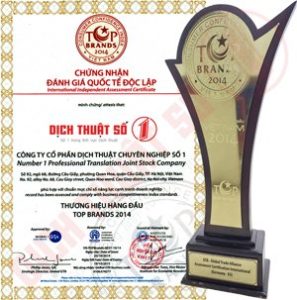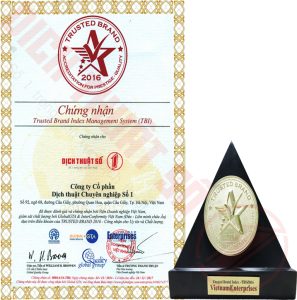Cambodian writing is one of the oldest and most unique writing systems in Southeast Asia. Let's learn in detail about the structure, characteristics of this writing system and the standard rules in writing. Cambodian in the article below.
>>>See more: CAMBODIA TRANSLATION SERVICES WITH PRESTIGE AND EXPERIENCE
Introduction to Cambodian writing
Cambodian script Old Khmer or Old Khmer, is a form of writing that was used from the early centuries of Khmer civilization, around the 7th to the 15th century. It was developed from the Brahmi script, a writing system originating in India, and was adapted to suit the local language and culture.

Through centuries of development, change and transformation, Cambodian has become an independent writing system, with its own distinct characteristics. This writing system is not only used to record the language but also symbolizes the richness and diversity of Cambodia's cultural heritage.
>>>See more: Cambodian to Vietnamese Translation – Accurate Translation, Cheap Price
Structure of the Cambodian writing system
The Cambodian writing system is complex and tightly structured, including the following main components:
- Consonant: The Khmer writing system has 33 consonantal characters, divided into categories based on the place of articulation in the mouth (such as throat, palate, or lips). Each consonant can combine with a vowel to form a syllable, and their place of articulation helps create variety in Khmer phonetics.
- Vowels: Khmer has 11 vowels, including both independent vowels (which can stand alone) and linked vowels (which combine with consonants to form complete syllables). Vowels can vary depending on their position and how they are used with consonants.
- Tone: Khmer uses 6 tones to indicate the tone of a word. The tones are expressed by changing the position or adding diacritics to letters, which not only affects the pronunciation but also changes the meaning of the word, creating diversity in semantics and expression.
- Syllable: Cambodian is a syllabic writing system, meaning that each character or combination of characters can represent a syllable or part of a syllable.
Therefore, reading and writing Cambodian can be more complex, requiring precision in combining consonants, vowels and tones to ensure correct meaning and pronunciation.

>>>See more: Vietnamese to Khmer Translation: Notarized Translation, Accurate, Fast
Correct writing rules in Cambodian
Cambodian writing follows complex but logical writing rules. To write correctly, the following principles must be followed:
- Write from left to right: Like many other languages, Cambodian is written horizontally from left to right. Consonants, vowels, and diacritics are combined into a continuous sequence to form complete words.
- Consonants come first, vowels come last: Typically, a word in Cambodian begins with a consonant. Vowels will be placed around the consonant (before, after, above, or below the consonant) depending on the type of vowel and the pronunciation rule. This creates a complex combination of letters in each syllable.
- Tone marks: Tone marks are placed above or below a consonant-vowel cluster to determine the pitch and pronunciation of a word. Placing a tone mark in the wrong place can lead to incorrect pronunciation and change the meaning of the word.
- Independent and linked vowels: In Cambodian, vowels can appear alone or in conjunction with consonants. When vowels stand alone, they function as individual words or syllables. When combined with consonants, conjunction vowels help form more complex syllables.
- Using diacritics: Cambodian writing has diacritics, such as diacritics to create sound variations of consonants or to indicate the pronunciation of vowels. These diacritics are usually placed above or below the main character, and play an important role in expressing the correct phonetics.
- Complex syllable structure: Cambodian is a syllabic writing system, each syllable usually consists of a main consonant, a vowel, and a tone mark. Some syllables also consist of several consonants and vowels linked together, forming a complex sound chain.
- How to combine consonants: Khmer Several consonants can be put together to form consonant clusters, especially when two consonants are next to each other. These consonant clusters often have their own rules for spelling and pronunciation.
- Spacing between words: Unlike many languages that use the Latin alphabet, Cambodian has no spaces between words. This means that words in a sentence are written one after the other, without clear separation. Readers must rely on context to distinguish between words.

>>>See more: Top quality Khmer (Cambodian) translation
The most effective way to learn to write Cambodian
Learning to write Cambodian (Khmer) requires patience and a good learning method, especially for those who are not familiar with this complex writing system. Here are some effective methods to help you master the Cambodian writing:
- Master the Cambodian alphabet: Start with memorization Cambodian alphabet, practice pronouncing each letter and get familiar with how they combine to form syllables.
- Understanding how consonants and vowels combine: Cambodian writing has a complex structure when combining consonants with vowels, so you need to practice recognizing the position of vowels and consonants in each word, as well as how to place tone marks in the correct position.
- Practice writing by hand: Start by writing each character by hand. This will familiarize you with the shape and features of the Cambodian script. Use a notebook with a grid to learn how to write evenly and evenly, writing each character over and over again to memorize the shape and letter combinations.
- Using online learning materials: There are many online resources such as video tutorials, websites, and apps to help you learn to write Cambodian.
- Join Cambodian writing classes: If possible, take online or local language classes to get direct instruction on correct spelling and pronunciation from experienced teachers. Experienced teachers will help you correct your mistakes and improve your writing skills.
- Daily practice: Daily practice is the key to success. Spend at least 15-30 minutes a day practicing writing words and sentences in Cambodian. Maintaining a daily writing practice will help you improve quickly and remember them longer.
- Interact with locals: When you have the chance, practice writing and talking with native speakers or people who are fluent in Cambodian. They can help you better understand the rules and characteristics of this writing system.
By practicing diligently and using effective learning methods, you will quickly master the Cambodian writing system and use it correctly in everyday communication and writing.

Tools to support writing Cambodian
To learn and write Cambodian (Khmer) effectively, you can use many supporting tools from online to mobile applications. Below are popular and useful tools that make learning to write Cambodian easier:
- Google Translate: Support Translate from Vietnamese to Cambodian and provides transcriptions, making it easy to understand the pronunciation and meaning of Cambodian words. While it's not perfect at spelling every character correctly, it's a good help in finding basic vocabulary.
- Khmer Keyboard (Khmer Keyboard App): Khmer keyboard apps, like Khmer Keyboard on iOS and Android, provide a virtual keyboard that helps you type Cambodian easily on your phone or computer.
- Learn Khmer Online: This site offers lessons from basic to advanced Cambodian, including instructions on how to write Cambodian. You can learn each character, how to combine consonants and vowels, and the rules of writing.
- Khmer Alphabet Learning Apps: These apps often come with pronunciation to help learners develop listening and writing skills at the same time.
- Unicode Khmer Typing Tool: Several online tools support typing Cambodian characters according to Unicode standards, helping you to write accurately and correctly on your computer. These tools support both learners and those who work with Cambodian in official documents.
- i Speak Khmer: Offers online courses on the Cambodian language, including writing. These courses often include detailed instruction on the alphabet, how to blend sounds, and practice writing sentences.

Cambodian script is an indispensable part of cultural heritage and Cambodian language, reflecting the country's long historical development. Learning and mastering the Cambodian script not only opens the door to linguistic knowledge, but also helps learners gain a deeper understanding of Cambodia's rich and diverse culture.








